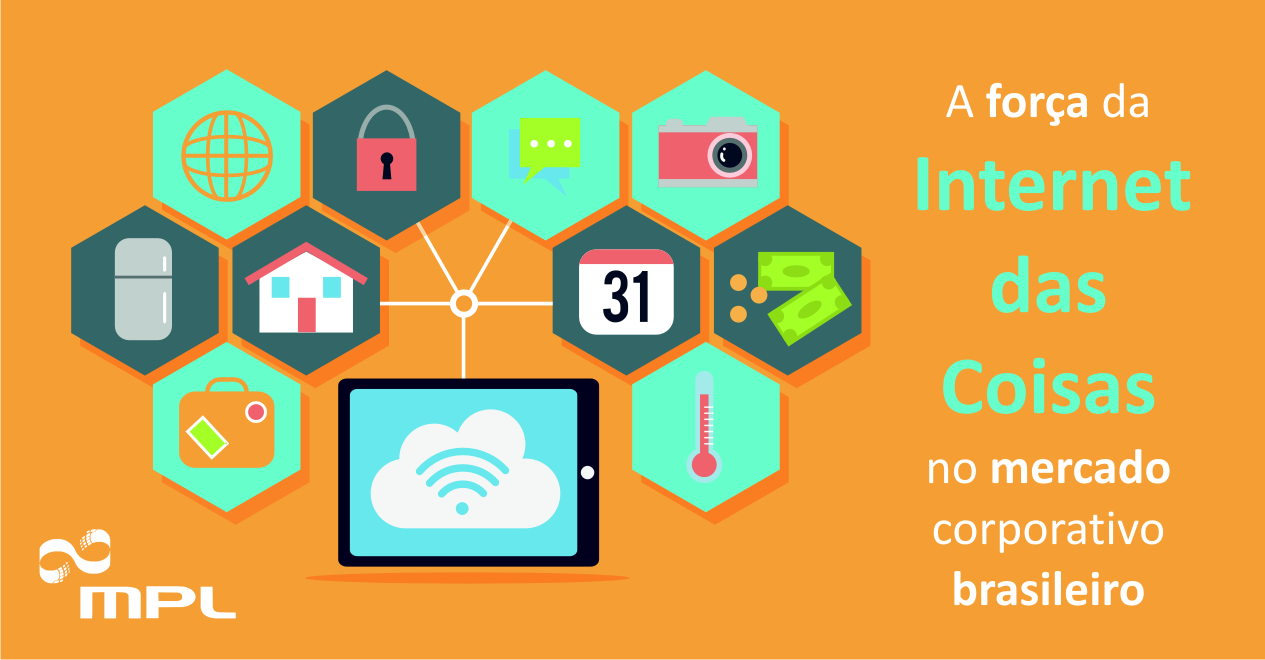
18 Aug The Power of IoT in the Brazilian Corporate Market
Technology can generate up to a million jobs in 2 and a half years.
IoT – Internet of Things. Despite the name being new, the concept of M2M (Machine-2-Machine) is old, with industrial companies around the world having used this type of system for decades. This type of technology allows the collection of information, helping to optimize the operational management of companies, integrating the data collected with business processes, making the decision-making of managers more strategic and “data driven”.
But why is IoT becoming such a strong movement now, if companies have been using M2M systems for decades? The answer lies in the moment of digital transformation that we are experiencing, the so-called digital journey. The new reality that companies face is just one: either they adapt to new consumers, business models and processes and technologies, or they will disappear. And adapting to new technologies means evolving with them. This evolution can be seen from traditional M2M systems to IoT technology.
The problem with older M2M systems is that they are largely proprietary and inflexible. They require specialized hardware and expensive networking connectivity. In addition to the expense of a state-of-the-art integrated system that transforms information into business processes. The M2M system as we know it today lacks security, system management and analysis for the company (we commented on this point in the post “the internet of things could be the secret weapon for JDEdwards”), and this lack sets precedents for new technologies to emerge and improve processes. Once the possibility of improving processes is presented, this new integrative technology started to be better known and used by the market. And the demand only seems to increase every day. With the explosion of internet-connectable devices (cell phones, tablets, wearables such as smartwatches or smartglasses, and so many other emerging technological devices), IoT has become a possibility that is expanding more and more.
The logic is simple: if it is possible to connect to the internet, it is possible to use the IoT to integrate, measure and analyze the data captured/used by that device. The possibilities are countless, and they work for basically any sector or company that has a minimal technology structure, and knows how to use it as a driver of innovation.
Gary Atkinson, former director of emerging technologies at AMR, a pioneer in the use of IoT in business, declared at the end of 2015 at the iotdesign event, that the estimate of jobs for the development of this technology would reach one million in 2020.
“The internet of things is opening up a world of embeds for new developers who are currently working in the mobile or web app space. We need to harness that creativity,” Atkinson said. “50% from mobile app developers have expressed interest in moving to IoT” – he added. Remembering that this statement was given almost 2 years ago, when the technology was still not as well known as it is today.
Nick O'Leary, an emerging technology expert at IBM, gave a demo where he showed how easy it can be to connect a device to a cloud-based server and then load data and analyze it. In 15 minutes on stage Nick carried out the entire process, while lecturing, and ended the action by analyzing the processed data, an act that would have taken days a few years ago, without the use of IoT. “Technology is at a point where people can build things and don't have to be engineers,” O'Leary said.
You can see the full article here.
(SOURCE: www.electronicsweekly.com)
The Internet of Things in the Brazilian market: At the Telebras Panel conference last year, Eduardo Trude, president of TELECO, commented on the possibility of Brazil having 100 to 200 million connected devices by 2025. He highlighted the importance of IoT and said that the leap towards this technological advance depends only on a “push” from companies:
“Connectivity is the key element, but the revenue contribution from connectivity is less than 5%. Today what we see is the connection of higher added value equipment. They are ships, CT scanners, tractors, harvesters, because that is what is possible with the current cost of connectivity” – Trude said “To go to billions of objects, this price of connectivity has to go down, battery consumption has to go down. They are starting to have solutions on the technological side, but regulatory changes will have to happen, especially tax changes” – he added.
You can see the full article here.
(SOURCE: http://www.convergenciadigital.com.br)
It is notable that the Brazilian market still sees the Internet of Things more as an emerging technology than as a tool to increase production, reduce costs or generate control in operational processes. An evangelization about the possibilities of the IoT is needed. A movement to disseminate information that shows that this technology is less sci-fi and more real and scalable for the Brazilian market than it seems.


No Comments